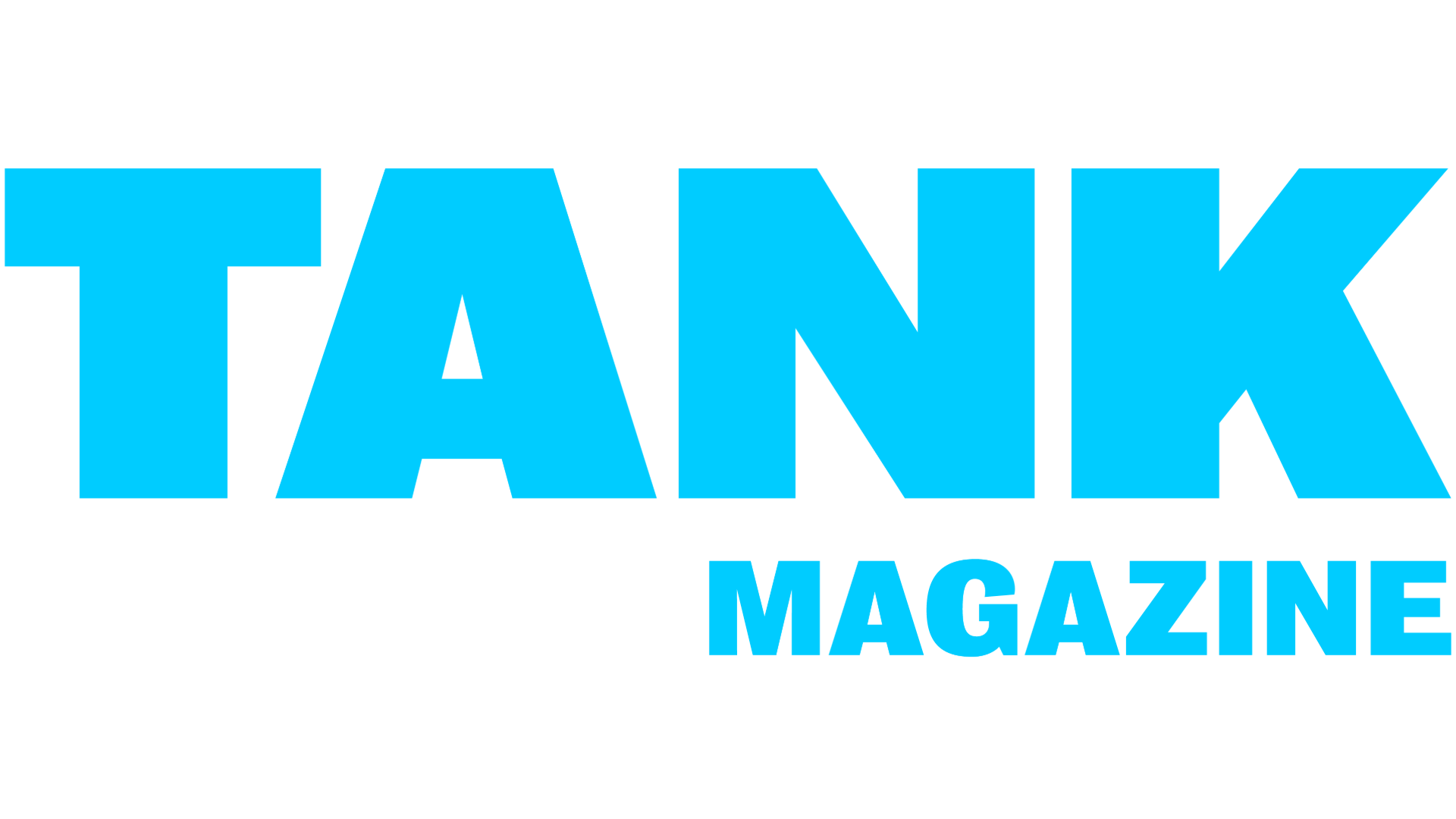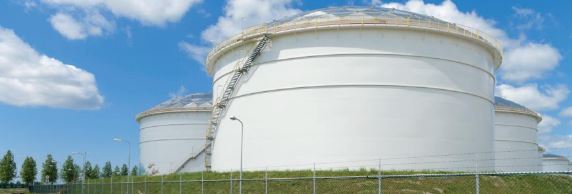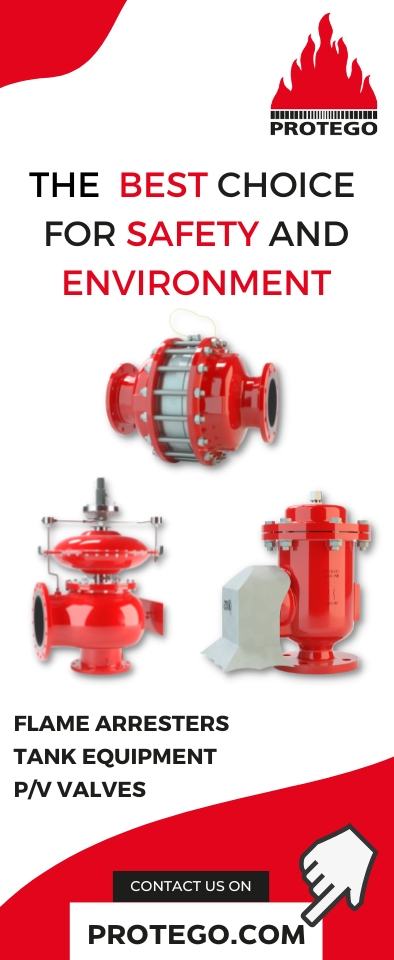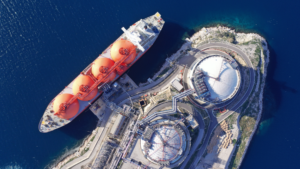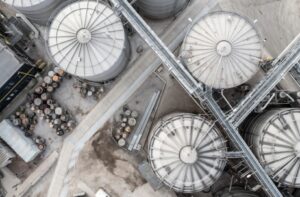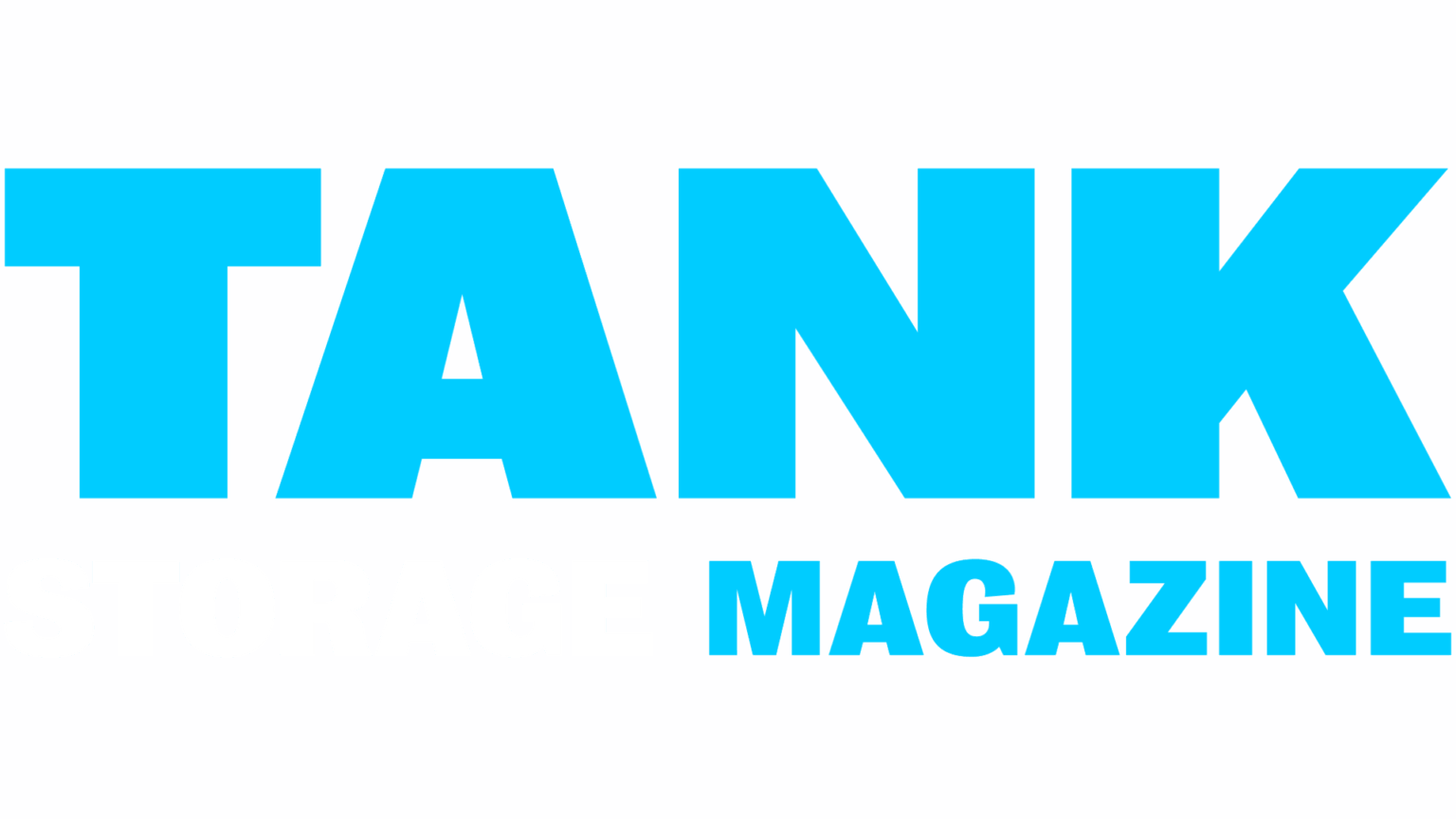Tank Storage Magazine showcases the new technologies which have changed the tank storage sector
An Environmental Gamechanger
The ‘Vent-Less’ Breather
Vent Test Bench
It’s a sad reality that 90% of the breather vents tested do not meet industry standards (API 2000 and ISO 28300) when they leave the manufacturer. Assentech has developed the first fully automated mobile vent test bench with state-of-the-art technology that uses artificial intelligence (AI) to profile a vent function against algorithms that enable it to ‘think’ and react as it tests. Traditional manual testing requires a high level of skill and precise hand/eye coordination where two technicians can produce very different results from testing the same valve.
Development of the device started in 2018 after an old manual unit was stolen. Assentech can now produce verified test certificates that include the full pressure and flow data profile for both pressure and vacuum ports. This highly accurate information will give the leak rates of specific pressure ranges, such as 75% and 90% of set point, and at the required operating pressure if required. The test results can be instantly uploaded to the cloud and transferred to a phone or tablet using a QR code.
‘We recently used this technology to assist a client in the biogas industry reduce excessive emissions and odours from one of their facilities and was under threat of closure,’ says Assentech managing director, Ewart Cox. ‘They had purchased low-cost vents that were not leak tight and were leaking huge volumes of biogas that consists of 60% methane, which is 36 times more damaging to the environment than CO2.
‘Our data showed that every low-cost vent on their site was leaking a cloud of biogas equivalent in volume to 112 double decker buses per year at a loss of £8,000 [€9,370] in methane. Assentech provided a replacement vent design that reduced losses down to the equivalent of 0.11 of a double decker bus and £12.
‘The quality vent costs twice the price of the cheap vent but payback was achieved in 14 months and reduced emissions of global warming gas from 161 tonnes down to 0.158 tonnes. The UK Environment Agency congratulated us on our work.’
This technology will ensure end users, vent manufacturers, maintenance companies and regulators will have the knowledge and best available technique to establish breather vent functionality to keep the tank storage industry, safe, compliant and profitable. The information provided can be used for ESG reporting.
www.assentech.co.uk
Improving safety, efficiency, and quality in tank maintenance
ALPHA1 robot
Confined Space Robotics (CSR) is a robotics solutions company that offers a technology that changes the industry approach to tank maintenance. CSR is dedicated to eliminating the need for humans to enter dangerous confined spaces such as tanks and vessels required in the production of petrochemicals and fertilisers. CSR’s technology offering includes robots for inspections, abrasive blasting, vacuuming, coatings applications and the exterior painting of storage vessels. CSR sells, leases, and rents its robots directly to asset owners or to service providers that conduct tank maintenance work for companies. CSR provides its customers a comprehensive training model on its robotic solutions all with the intent to perform project work with zero injuries.
THE ALPHA1 ROBOT TECHNOLOGY
The ALPHA1 robotic system reduces human exposure to confined spaces as well as improving the quality and cost effectiveness of abrasive blasting and coating. The ALPHA1 is a 4 – component robotic solution. The articulated arm is a motorised, 6 degree of freedom robot that is programmed to move a blast nozzle or a paint gun within a confined space. The robotic arm weighs 55 lb (25 kg) with a length of 4.3 ft (1.3 m) when fully extended which allows it to fit through openings as small as 18 inches (45.7 cm).
Since robots do not get tired or fatigued like humans, the ALPHA1 has consistently outperformed its human counterparts in terms of speed, quality, and consistency. Proper surface preparation is critical in achieving proper bonding between the coating material and the steel surface. The ALPHA1 system ensures consistency in the quality of the surface preparation for optimal bonding.
The ALPHA1 has successfully proven to reduce the man hours within a confined space by up to 95% during a project and 100% during the blasting operation. CSR’s site-based case studies also reveal that projects timelines are reduced by
up to 50% thereby reducing customer asset downtime.
www.csrrobotics.com
Seeing through
the eyes of the mobile worker
Visor-Ex 01 smart glasses
The Pepperl+Fuchs brand ECOM Instruments, together with its cooperation partner Iristick, is introducing Visor-Ex 01 smart glasses for industrial use in hazardous areas. The intelligent wearable, weighing just 180 g, combines high camera/display quality and reliable communication features in an ergonomic design for the user’s utmost comfort. This provides mobile workers with an optimal companion for tasks that require hands-free use as well as continuous communications, such as remote expert support.
A total of three integrated cameras transform Visor-Ex 01 into the remote expert’s bionic eye. Two 16-megapixel cameras are centrally positioned to depict the wearer’s natural field of vision – this way remote support views what is happening from the same angle and perspective as the mobile worker. A secondary camera offers a 6x optical zoom for zooming without loss of quality and scanning of barcodes and QR codes.
The system utilises the ECOM Smart-Ex 02 smartphone for hazardous areas as a computing unit with LTE connectivity and a pocket unit with a replaceable battery for power supply, an intelligent ecosystem is created for a wide range of application scenarios in the industrial sector. The distribution of functions across the individual system components helps to minimise the weight of the headset unit – without compromising on performance, connectivity or battery life. By connecting to the Smart-Ex 02, users can continue to use their tried-and-tested smartphone for harsh environmental conditions without restriction and benefit from all the advantages and security features and controls of the Android 11 operating system, including over-the-air updates, ease of use and TCO.
Visor-Ex 01 will be certified for ATEX/IECEx Zone 1/21 and 2/22 as well as NEC/CEC Division 1 and 2 and will have protection class IP68. It can be used within a temperature range of -20 to +60 °C.
www.ecom-ex.com
www.pepperl-fuchs.com
Innovative level measurement
Centurion Guided Radar (CGR) Level Transmitter
Hawk Measurement’s Centurion Guided Radar (CGR) Level Transmitter is ideal for the measurement of liquids, sludge, powders and granules to a range of 38 m for level and interface measurement. This technology is not affected by pressure, temperature, viscosity, vacuum, foam, dust, changes in dielectric constant or coating of the probe. Hawk’s CGR recently won the prestigious Chemical Processing 2021 Vaaler Awards. It also received honorable mention in the 2021 Process Instrumentation Product Innovation Awards. Hawk’s CGR is the first and only guided wave radar on the market to feature Power over Ethernet (PoE) communications, allowing secure in-plant and remote monitoring, as well as remote sensor setup, diagnostics and troubleshooting abilities.
If troubleshooting is required, the CGR PoE will communicate to remote service technicians for off-site diagnostics, sensor health and reconfiguration, without the need to climb a tank or enter the facility. Hawk’s CGR PoE can connect to an online portal, the HawkEye365, which can monitor multiple tanks worldwide in real-time. The portal provides accessibility to critical data such as volume, space, material height, historical trending, alarms and alerts, sensor setup and diagnostics. Plant level operator screens are customised to the company’s specifications to include control room level and operations level interface screens. In the graphical user interface permissions can be set for different tiers such as plant-level, finance, or executive level.
Hawk’s PoE technology drastically increased business efficiencies at a major US cattle feed company in 2021. The company came to Hawk to implement smart technologies in order to increase business efficiencies and decrease human error. Hawk recommend the CGR PoE level transmitter. The units’ work to control inventory have drastically cut costs for the livestock feed company, ranging from reducing installation costs to maximising production efficiencies. By implementing PoE with AI, personnel can access real-time data on process measurements and machine function from their PC, tablet, or smartphone. The cattle feed company also receives detailed reports that inform operations how their process is performing, in real-time and over time. The CGR PoE system informs accounting and administration important cost accounting detail, when to purchase, what to purchase and tracks commodity trading with inventory availability. The AI components will make predictions as to when a breakdown is likely to happen, allowing maintenance to plan a scheduled outage versus the inevitable costly emergency shutdown. They have been so satisfied with the results that they are planning to implement many more systems company-wide.
https://www.hawkmeasurement.com/product/CGR/
How are your storage tanks coated?
10Q paint robot
All storage tanks, regardless of size, material or location, require high-quality protective coating layers to prevent corrosion damage. For a long time now, these large-scale assets have been coated with the same old conventional, time-consuming, expensive methods such as rollers and spray guns. Painters must work at dangerous heights on scaffoldings. Furthermore, applying high-quality coating layers has a significant impact on the tanks’ lifespan and long-term maintenance costs. Understanding the need for a change, Qlayers made it its mission to revolutionise the coating industry.
Disrupting the world of coating storage tanks
Qlayers is a Dutch high-tech start-up developing innovative robotic technology to automate the industrial coating process of large infrastructures such as storage tanks, wind turbine blades and ships. The 10Q robot developed by Qlayers is the industry’s first automated coating crawler that paints the steel storage tanks with high precision, zero-emission and a consistent speed of up to 200 m2/h.
Qlayers’ robots are equipped with a patented spray shielding system that prevents toxic paint particles (volatile organic compounds – VOCs) from being released into the air, thus making the process more environmentally friendly. In addition, due to the smart design of the print head, the transfer efficiency during the coating procedure is increased to up to 90% with a guaranteed consistent result in a wind force of up to 4 on the Beaufort Scale. The consistent automated performance also allows better prediction of degradation, and therefore reduces maintenance and long-term costs.
Boosting the efficiency and safety of coating operations
The robots come with dedicated control software that enables clients to have full control over every aspect of the automated painting process by generating real-time reports on parameters such as layer thickness, temperature, and humidity. Moreover, coating personnel can operate the robot from a safe distance on the ground with a user-friendly controller module and the touch of a button. These features give customers total control and flexibility while reducing the number of working hours on the suspended scaffolding and dangerous heights by up to 80%.
Creating value for the asset owners and coating companies
Qlayers’ novel technology offers asset owners and coating contractors all the advantages that automation brings and more. The safe, efficient, and reliable solution maintains consistent coating quality while minimising human and environmental risk.
www.qlayers.com
Optimising tanker port calls through data sharing and digital collaboration
Qronoport
A new digital collaborative platform by Port+, called Qronoport, improves the planning, visibility and overall predictability of tanker port calls. The increased predictability will decrease the waste in between activities and hence decrease the turnaround times for vessels in the port.
Research by Port+ has found that a lot of time is wasted during port calls, especially with tankers. In the Port of Antwerp, a tanker will on average spend 2.5 days in the port. On average, 50% of a tanker port call is spent waiting. 25% of the time is spent waiting at anchorage, the other 25% a tanker is waiting at berth. This means that there are no operational activities taking place. Even at efficient ports like the Port of Antwerp, there is a lot of room for improvement.
Qronoport facilitates operational data sharing and more efficient digital communication between stakeholders involved in the ‘pitstop’ of a tanker. The platform ingests data from various sources. Data from port community systems and AIS data is combined with operational data and timestamps about planned, ongoing and finished activities directly from the stakeholders. The combination of all this data gives stakeholders in the process a highly accurate and active overview of the port call – both planned, actual and completed – increasing the efficiency of their planning and operations.
Terminals are one of the key stakeholders in the port call process. Many of the other port call stakeholders rely on information from the terminal to create and adapt their own planning. By sharing data from the terminal through one platform, other stakeholders will proactively get new information, allowing them to adapt and optimise their own planning and operations. The terminal in return will have access to operational data from the other stakeholders (surveyors, ship operators, etc.) which will help the terminal to optimise its berth and jetty planning and operations.
And the effect of optimising port calls doesn’t stop at the terminal or in a port. Port call optimisation leads to voyage optimisation. And combining port call and voyage optimisation is the foundation for lowering fuel consumption and carbon emissions in the maritime industry.
www.qronoport.com
Transforming non-person entry robotic tank cleaning
Robotic tank cleaning service
After years of research, Re-Gen Robotics launched a bespoke robotic cleaning service that eradicates the need for human entry into tanks. Their patented solutions ensure workers aren’t endangered by operations carried out in hazardous confined space environments.
Re-Gen Robotics was awarded a UK Patent No. 2585311B, ‘Zero entry sediment removal from storage tanks’ in May 2021, for its fully contained robotic tank cleaning solution. It is the sole authorised provider of this innovative technology in the UK. The patent covers its all-in-one mobile vacuum tanker and apparatus, integrated cranage system, custom designed external and internal hydraulic ramps and ancillary equipment for its robots.
So far, they have eliminated 10,000+ hours of confined space cleaning, leading to an overall reduction in both accidents and health and safety incidents onsite. Over 30 tanks consisting of white oil, black oil and distillate tanks in gas plants have been cleaned and they have completed the first worldwide, 100% non-person entry tank cleans for oil majors such as Shell, P66 and Vermilion.
Re-Gen Robotics offers four main robotic tank cleaning services including fixed roof, floating roof, heavy fuel oil and coned floor tank cleaning. Their unique, closed loop cleaning system can reduce cleaning time by up to 80%, significantly decreasing downtime and loss of production. Service solutions are based on existing and evolving customer needs and can be adapted to suit individual client needs and time frames.
Product innovation includes an offset suction head to clean under water suction pipes around the external diameter of tanks. This tool alone has decreased tank cleaning time by 10-12%. A 360-degree full coverage washing head, was developed with the capability to wash the walls and the roof of tanks and affords faster turnaround times by 10% on floating roof tanks.
Re-Gen Robotics’ new tank localisation mapping system will be brought into service in Q1 2022. The inspection analytics software automates monitoring of the tank infrastructure giving up to date, reliable data. The company has recently completed on its new state-of-the-art headquarters, which includes R&D facilities to further develop their equipment and service bays for robotic cleaning systems and tankers. Several new patents are due to be introduced, to carry out more diverse tasks remotely. By Q1 2022 Re-Gen Robotics will have four systems in operation with the capacity to roll out their tank cleaning service and technology to customers worldwide.
www.regenrobotics.com
Confined space inspection with situational awareness and live streaming
Scout 137 drone system
ScoutDI offers an end-to-end, fully digitalised data solution for inspection of confined spaces, for example maritime vessels and bulk liquid storage tanks.
The company’s integrated inspection system has two main parts:
- The Scout 137 – a robust, tethered drone that gathers location-tagged visual inspection footage, from spaces where human access will be unsafe, time-consuming, and expensive.
- The Scout Portal – an online inspection data service for inspection live-streaming, instant replays, reporting plus data management and -integration.
ScoutDI’s drone is tethered, which allows unlimited flight time and a robust data connection throughout the inspection. No need to worry about loss of data connection during flights beyond visual line of sight. The system is designed for GPS-denied locations and uses an onboard Lidar to generate a 3D point cloud map of the interior. Autonomy is provided in terms of position stability and robust anti-collision functionality. This allows the drone to navigate safely in confined spaces while keeping the operator in control.
The situational awareness provided by the 3D point cloud map is an indispensable visual aid allowing the operator to understand the drone’s location inside the asset. Without it, the operator would rely solely on the camera feed or line-of-sight to navigate. It would not be possible to see what’s behind or next to the drone or assess how far it is from the nearest obstacle.
Connecting the drone system to the internet can be done either using the embedded 4G router or simply by connecting to an on-site network. This allows off-site experts and operations teams to join the inspection remotely via the Scout Portal: ScoutDI’s online inspection portal.
In the Scout Portal, live location-tagged inspection data provides insight to the execution and findings of the inspection. Remote third parties can follow the inspection job in a split-screen view with live camera footage and the 3D map
side by side, enjoying the same situational awareness mentioned
above. The 3D map can be zoomed, panned, and rotated independently of the drone’s heading.
Beyond live remote participation, the Scout Portal allows high-resolution storage and instant replays of inspection jobs. There’s also an API to support existing asset integrity systems, digital twins etc. Over time, trend analysis and other data processing will also be offered.
In summary, ScoutDI believe that the solution they provide is comprehensive beyond the current norm.
www.scoutdi.com
Sophisticated IoT vibration monitoring
NEON Vibration Sensor
TWTG’s NEON Vibration Sensor has been developed in close collaboration with two global oil and gas majors, receiving input directly from rotating engineers. This new wireless IoT sensor is the most sophisticated in the NEON product line.
Vibration sensors work by detecting bearing faults on pumps, motors or other rotating equipment early, allowing operators to act swiftly before any serious issues arise, so by reducing downtime and eliminating potentially hazardous situations. The vibration sensor is designed to be retrofitted to existing machinery and enable previously passive objects to achieve ‘smart’ abilities and accordingly, contribute data.
Data enables engineers to learn about the wellbeing of a facility and make proactive decisions concerning maintenance or replacement of equipment. Over time, harvested data will enable engineers to analyse historical data, look for clues, anomalies, or sequences of events that occurred as precursors to an incident and start to learn the sometimes seemingly unconnected tell-tale markers to avoid recurrences.
Beautifully designed, IEXEx / ATEX certified devices, NEON products are built with the quality components and materials necessary to meet the stringent levels essential for use in the oil and gas environments. A crucial feature of the vibration sensor is its ability to transmit frequency spectrum via LoRaWAN. This functionality is a game-changer, eagerly awaited by engineers – a feat never achieved before by a LoRaWAN sensor.
www.twtg.io
